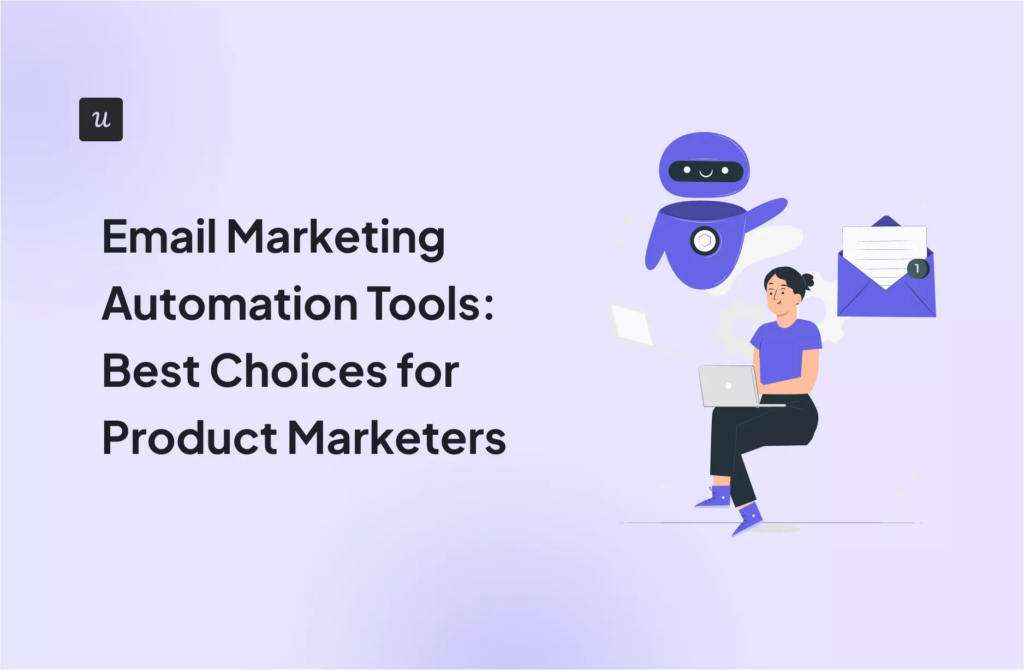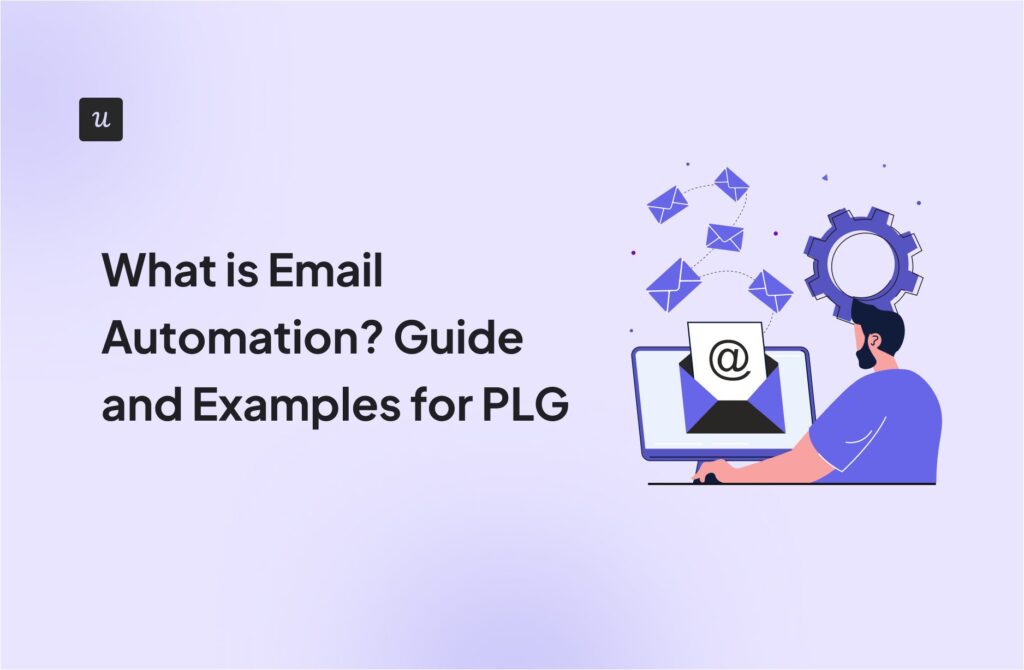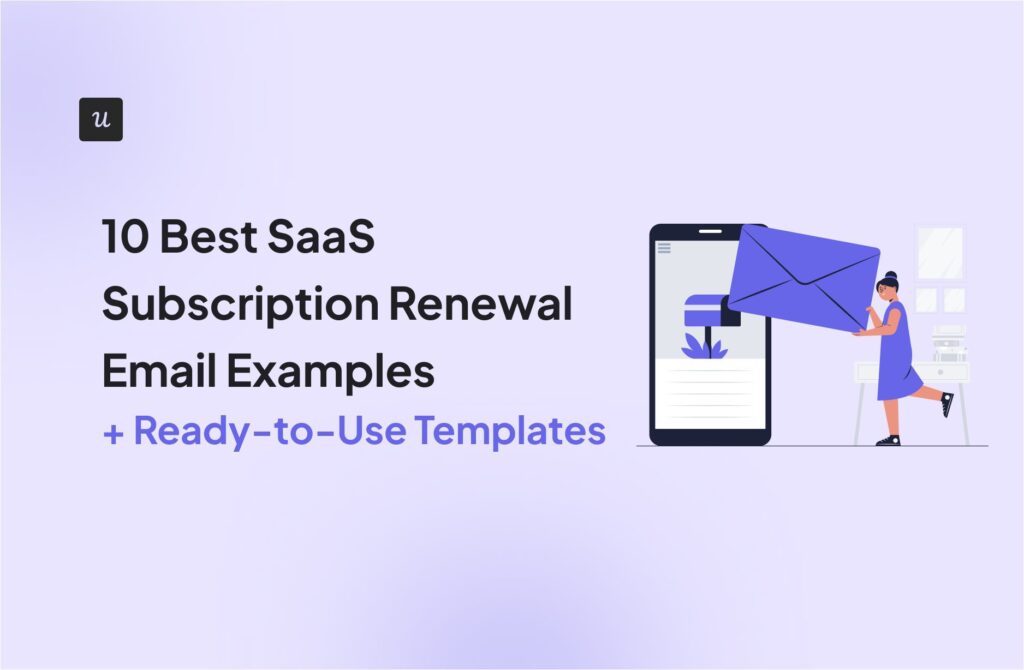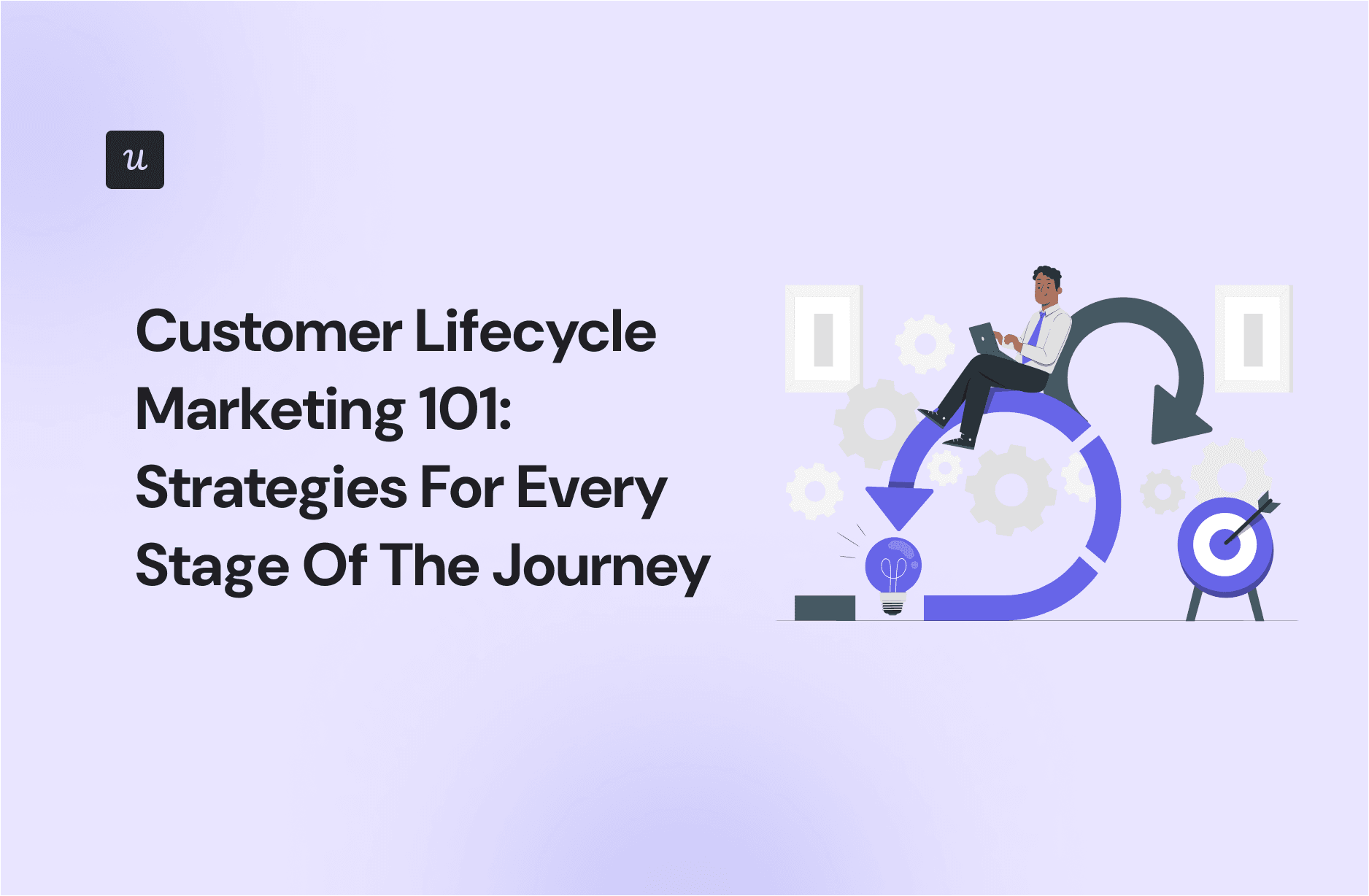
Customer Lifecycle Marketing 101: Strategies For Every Stage Of The Journey
Companies love flaunting their acquisition stats: new customers, deal flow, and MQLs. It’s the stuff that fills boardroom presentations and gets everyone nodding in approval. But the truth is, obsessing only over getting customers in the door is a risky growth strategy.
I’ve seen plenty of SaaS teams spend all their energy and budget winning new users, only to overlook what happens next. The real drivers of revenue: product engagement, retention, and expansion, often get left on the table.
Implementing an intentional customer lifecycle marketing program is how you fix that. By aligning your marketing efforts with each stage of the customer journey and sending hyper-personalized messages that meet users where they are, you can move beyond one-off transactions and build lasting, profitable relationships.
In this guide, I’ll show you how to build a customer lifecycle strategy that reduces CAC, maximizes revenue, and turns your existing customers into your biggest growth channel.
What’s your biggest customer lifecycle marketing challenge right now?
How are you currently guiding new users to their “Aha!” moment?
How do you persuade trial users to upgrade their plan?
What’s your main strategy for re-engaging inactive users?
A tailored customer lifecycle marketing strategy can solve that.
Userpilot helps you build personalized, omnichannel campaigns that guide users through every stage of their journey—from activation to advocacy.
Try Userpilot Now
See Why 1,000+ Teams Choose Userpilot

How lifecycle marketing works in PLG companies
In PLG-led companies, the product does its own marketing. This means that the ways of personalizing your lifecycle campaigns must be rooted in your users’ in-app behaviors and go in line with communication within the product.
Product marketers should set up personalized, JTBD-based sequences of conversational and product bumpers that guide users toward user journey milestones. The bumpers can appear inside the app (e.g., as interactive workflows with modals, tooltips, checklists) or outside of it (emails, push notifications). And, all subsequent steps should trigger based on how the user interacts with both the product and the communication elements.
That’s why I highly recommend using an all-in-one product platform, such as Userpilot. It will let you:
- Build segments once and reuse them for in-app, mobile, and email campaigns.
- Integrate omnichannel engagement flows in a single journey without CSV exports, migrations, cross-referencing, or API workarounds.
- Cross-reference the performance of your campaigns with user product metrics like customer engagement, activation, and MRR expansion.
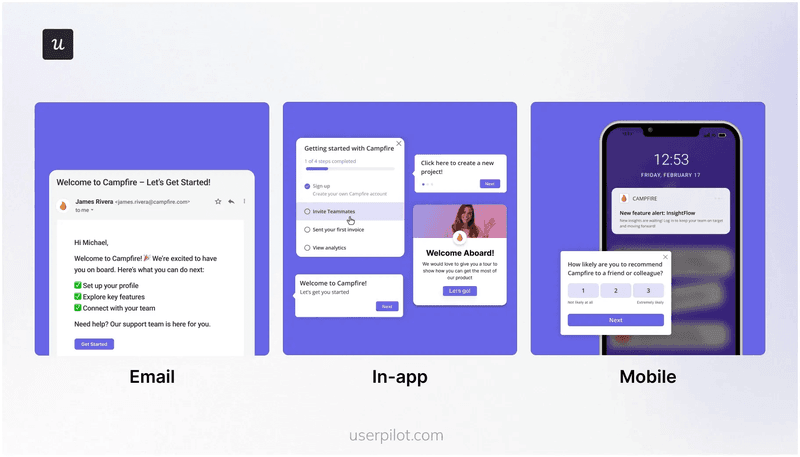
Lifecycle marketing tactics for every stage of the SaaS journey
There are four key lifecycle stages in the SaaS customer journey.
- Evaluation: Free users are trying to see if your product solves their problem.
- Conversion: Users deciding if it’s worth paying for.
- Retention: Paying customers who need to keep seeing value.
- Advocacy: Satisfied users who become brand advocates and refer others.
Evaluation stage campaigns
The evaluation stage, also known as the consideration stage, begins the moment a user signs up for a free or freemium account. They’re assessing whether your product actually solves their problems before making their first purchase.
Your goal at this stage is to get users to their first “Aha!” moment and activation as fast as possible.
Trigger a welcome email sequence to help users get started
Most new customers won’t initiate action immediately after signing up. A well-timed welcome email sequence keeps your product top of mind and nudges them toward activation.
I like to include a quick video in my welcome email, as that’s the fastest way to show users what they can do next.
Zapier’s onboarding campaign does this too. They welcome you with a 14-day learning path, a video, and links directly to helpful features:

After the initial welcome, if someone clicks into a specific feature, you can send a targeted email that shows how to get more out of that specific feature.
For instance, if you click the “Tables” feature on the Zapier web app, they follow up with an email explaining Tables, offering templates, and showing real workflows in action to support first-time customers:
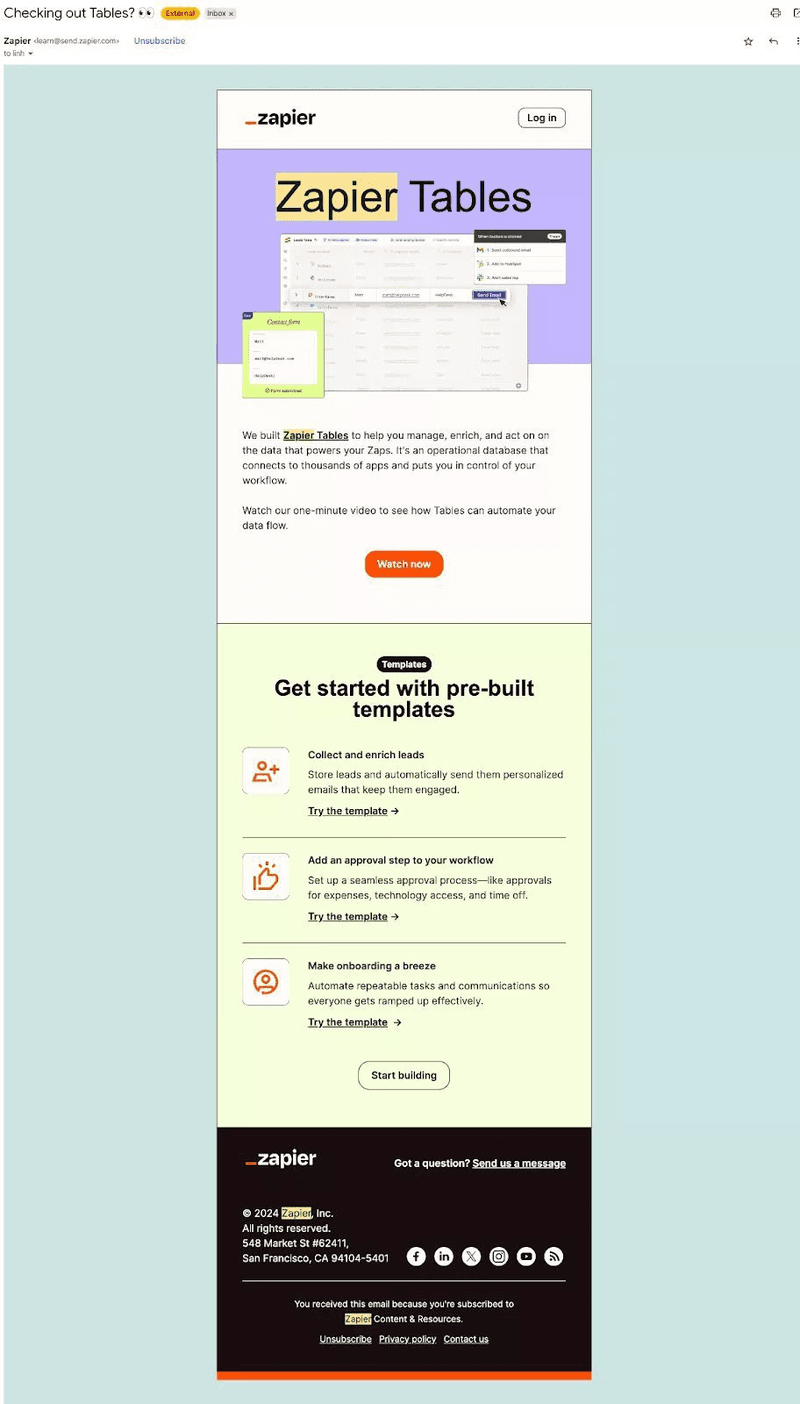
This kind of behavior-driven messaging helps first-time customers see how your product fits into their real day-to-day work and keeps them moving forward.
💡 Pro Tip: I strongly recommend using an integrated product adoption platform like Userpilot that enables you to trigger omnichannel engagement flows across email, web and mobile to predefined user segments or tracked user behavior.
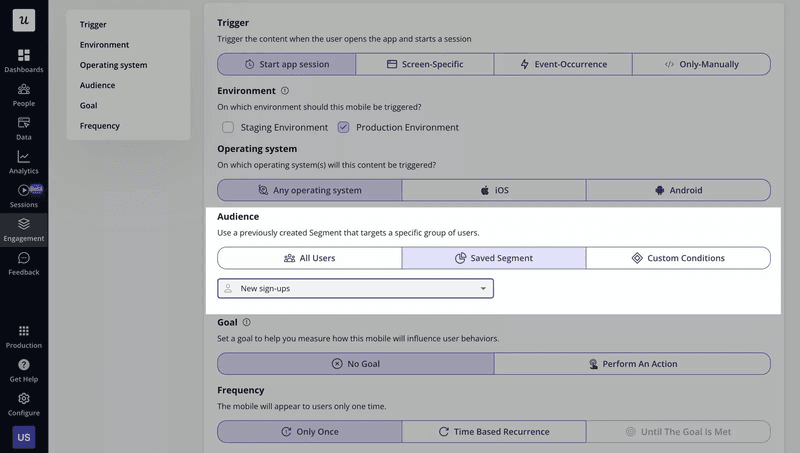
Launch a personalized interactive tour to activate first-time users
I’ve often used personalized interactive onboarding tours to reduce time-to-value for users.
The keyword here is “personalized.”
That means walking each user through the exact steps they need to reach their first meaningful outcome. You can also predict future behavior if you base these steps on the goals they shared during signup or in the welcome survey. For instance, if users indicate they want to “automate repetitive tasks” versus “integrate multiple tools,” the tours should follow entirely different paths.
We worked with Impala to build a tailored onboarding experience for different customer lifecycle stages using Userpilot. After implementation, there was a clear pattern where users who completed the walkthrough were twice as likely to activate. Impala’s activation rate had jumped from 23% to 46%.
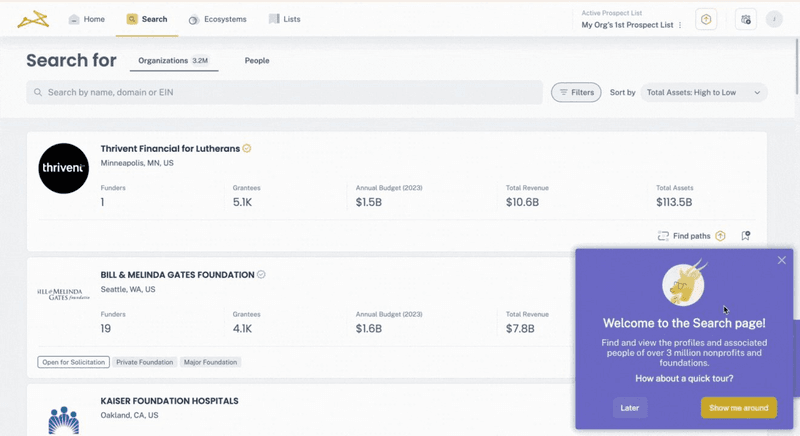
💡Userpilot action tip: Use our no-code editor to create interactive tours quickly and real-time customer data to improve user activation. You can create multi-step flows, embed videos or images, and target users by segment or behavior without writing a line of code.
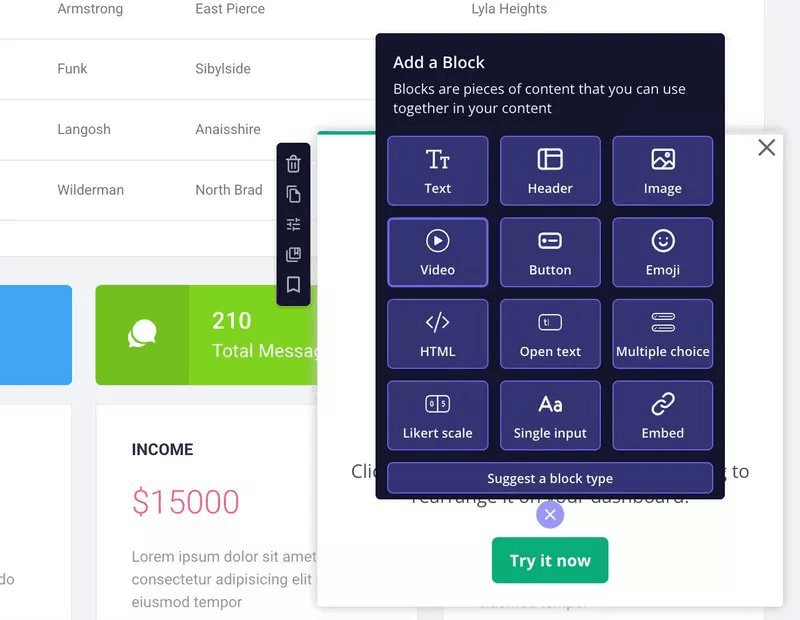
Conversion stage campaigns
At the conversion stage, users are nearing the end of their trial or actively exploring your pricing page, so your marketing strategy must switch from education to persuasion.
Everything we send to users in the conversion stage as part of our lifecycle marketing efforts needs to be focused on two things: reinforcing value and creating urgency.
Send end-of-trial emails to invoke loss aversion
I’d suggest running a targeted lifecycle email marketing sequence 3 days before the trial ends. You don’t want to send “just reminders.” Instead, I like to create emails that tell users what they’d lose out on if they don’t upgrade.
That could mean including personalized usage stats. Instead of saying “your trial is ending,” I’d send an email saying, “You’ve automated 12 workflows this week. Don’t lose them.” Then add a clear, focused CTA to upgrade.
Here’s an example from Zoho nudging potential buyers with their end-of-trial email: Zoho lays out what features you’ll lose, ties it directly to the plan change, and ends with a dead-simple upgrade button.

Offer time-sensitive offers to encourage upgrades
When users hesitate near the end of a trial, I send a short-term discount, something like 15% off if they upgrade within 48 hours. It gives them a reason to act.
I’ve tested email marketing, in-app messages, and banners. Push notifications work best. They’re quick, noticeable, and easy to tie to in-product behavior.
I always personalize the message using customer data like name, plan, language, and what they’ve done in the product.
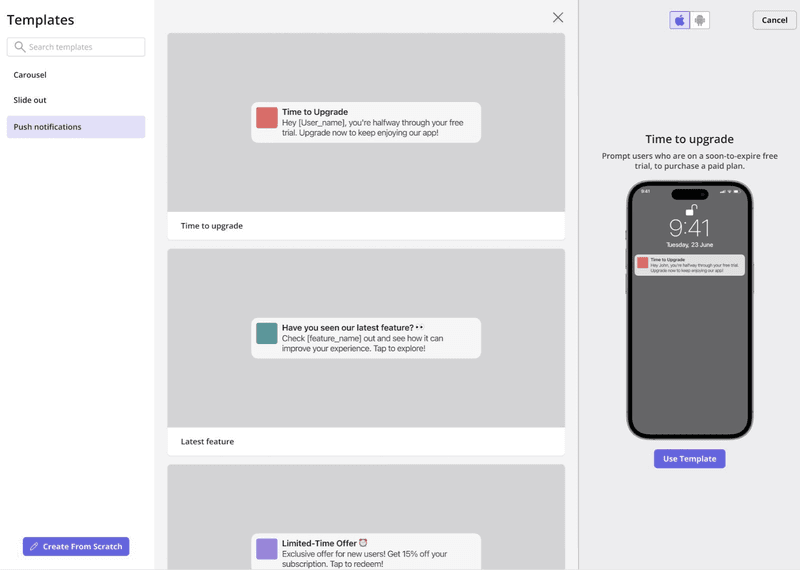
Userpilot also offers templates to trigger upgrade offers based on real-time customer data, such as usage, plan, or trial status
💡Pro Tip: I recommend setting frequency caps to respect quiet hours and prevent notification fatigue. For example, you might limit each user to no more than three push messages per day and configure your system to automatically hold all notifications between 10 PM and 7 AM in the user’s local time.
Retention stage campaigns
Once a user converts, I shift focus to retaining customers and maintaining strong customer engagement while giving them value throughout the customer lifecycle.
I work to find methods that reinforce their decision to upgrade, help them build habits inside the product, and guide them toward deeper product adoption over time.
Send monthly product usage reports to reinforce value
One quick way, baked into our broader marketing strategy, is to send monthly usage summaries. These emails remind users what they’ve accomplished and show the ROI they’re getting from the product.
I’ve also found that these emails add a bit of gamification, as users start wanting to beat their numbers from last month.
Grammarly’s usage reports are a solid example of this in action:

The email highlights completed actions, improvement streaks, and comparisons to other users, making progress feel rewarding and driving increased customer engagement.
And these emails don’t need to be long or fancy. What matters is that they surface real results and build momentum for further usage.
Re-engagement campaigns prevent churn
Just because someone hasn’t logged in recently doesn’t mean they’re gone for good. With the right message, you can still pull them back in. And re-engagement emails are a great way to start.
These emails work best when they do three things to engage customers:
- Acknowledge the drop-off without blaming the user.
- Highlight a specific feature or use case they haven’t tried.
- Give them a low-effort action to take (like one-click login or “resume where you left off”).
Here’s what that looks like in practice:
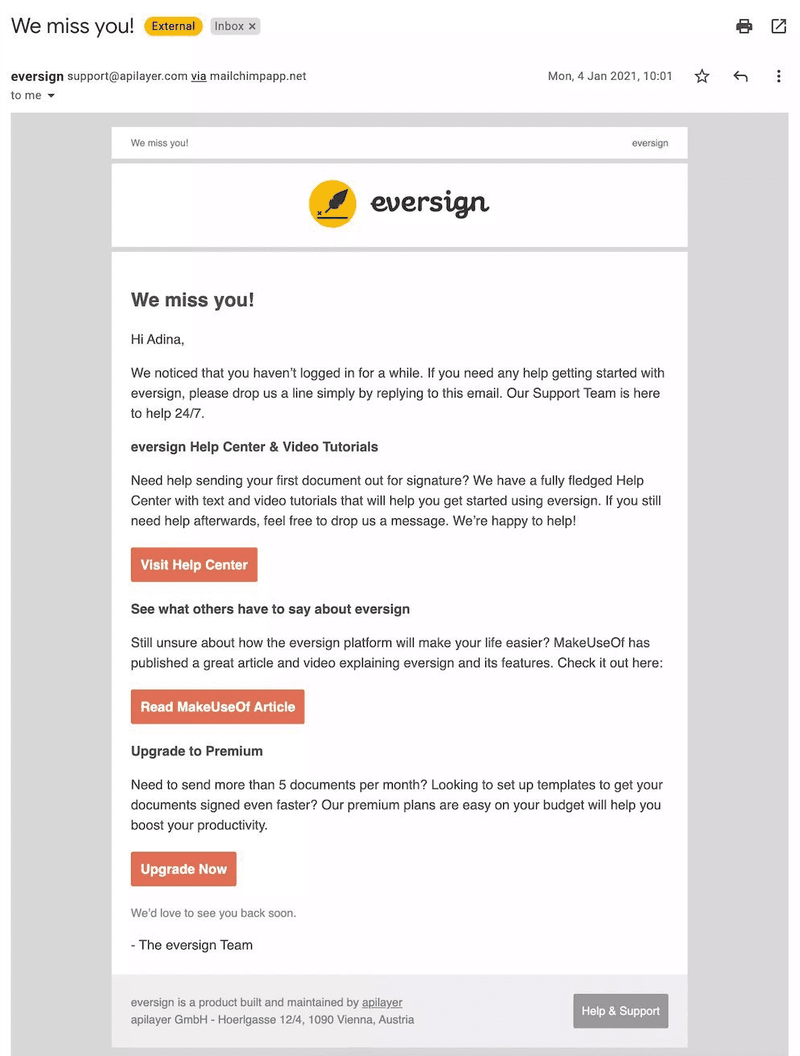
What I like about this format is how it offers multiple re-entry points: a help center for users who got stuck, an article for skeptics, and a direct upgrade CTA for potential customers who might already be sold.
No matter why they stopped using the product, each option provides a clear path back, showing users why they should return rather than just asking them to.
Announce new features to deepen product adoption
The more features customers adopt, the more embedded your product becomes in their workflows. That’s what makes your product sticky and builds lasting customer loyalty.
But the challenge is that most users experience feature blindness across the customer life cycle, a phenomenon where people use the same 2–3 features and ignore the rest.
Cleeng experienced this pain when a UI tweak buried its “Customer History” tab, and usage collapsed by 92%. With Userpilot tooltips and advanced analytics tools, the team highlighted the tab and regained 75% of the lost traffic within days.
“We decided to draw more attention to the feature tab with a tooltip… Even with many users dismissing the tooltip, the page visits still increased.” – Anna Sobiak, Product Designer at Cleeng
To make sure your users don’t miss features, I’d recommend turning every new release into a chance to re-engage people and guide them into a new habit.
Here’s how we do feature announcement emails:
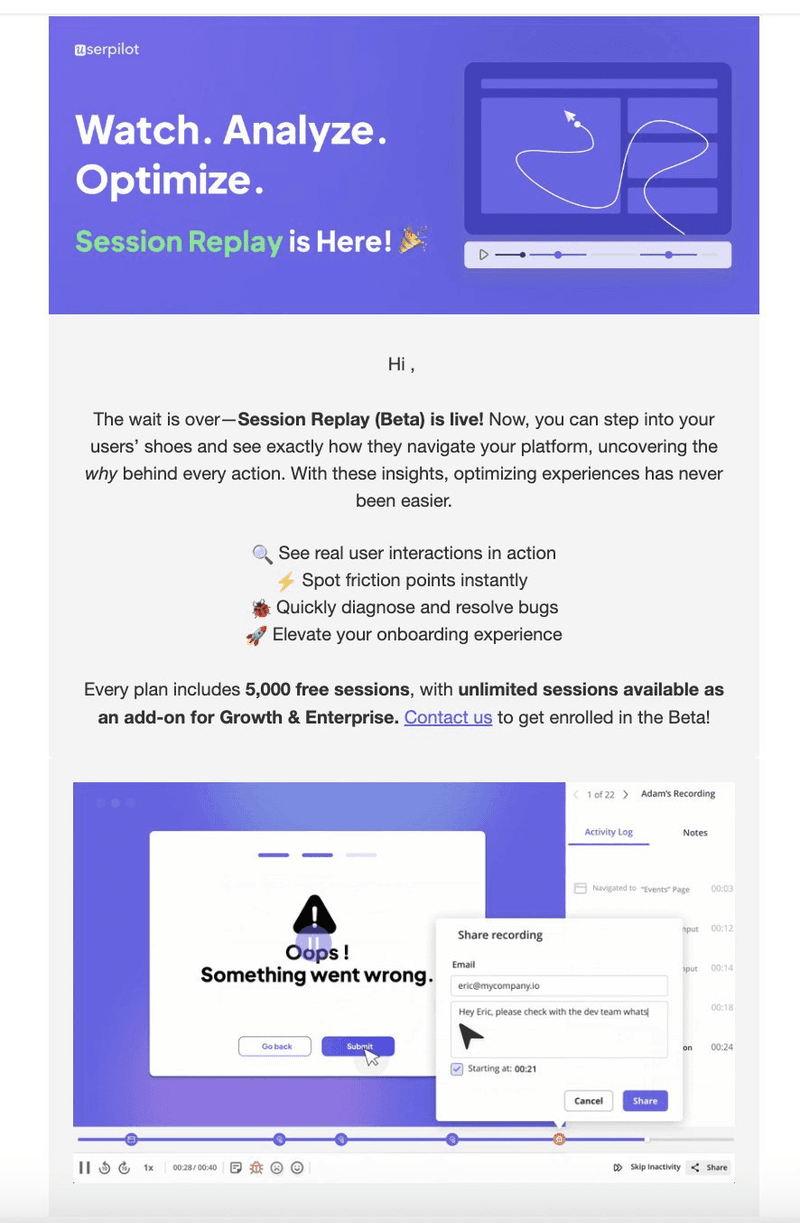
Instead of just a “Hey, there’s a new feature” email, we spell out exactly what the user can accomplish with the feature. In this case, the session replay feature helps users watch real user sessions and spot friction points and bugs. Such messaging helps users connect the feature to their day-to-day problems.
But email alone isn’t enough.
Once users return to the product, reinforce the feature with in-app messages. You can trigger the tooltips or announcements when the user lands in a relevant section of the product.
Advocacy stage campaigns
Advocacy is the final stage where your most valuable customers become brand champions. Users in this stage already love your product and make repeat purchases.
Your goal is to give these users an easy way to share. There are two reliable ways to do that: incentivized referrals and well-timed review requests.
Implement loyalty and referral programs
Referral programs work because they tap into natural behavior. If a repeat customer is getting value, they’re likely already talking about it. Your job is to make sharing easier and more rewarding.
A good referral program does three things:
- Offers a clear incentive, like credits, discounts, or premium unlocks.
- Makes the process dead simple (share on social media, drop a 5-star review, share a link over text message).
- Reinforces the reward loop with positive feedback.
Dropbox’s referral system is a textbook example. It rewards users with free storage and immediately celebrates their contribution with a thank-you email:
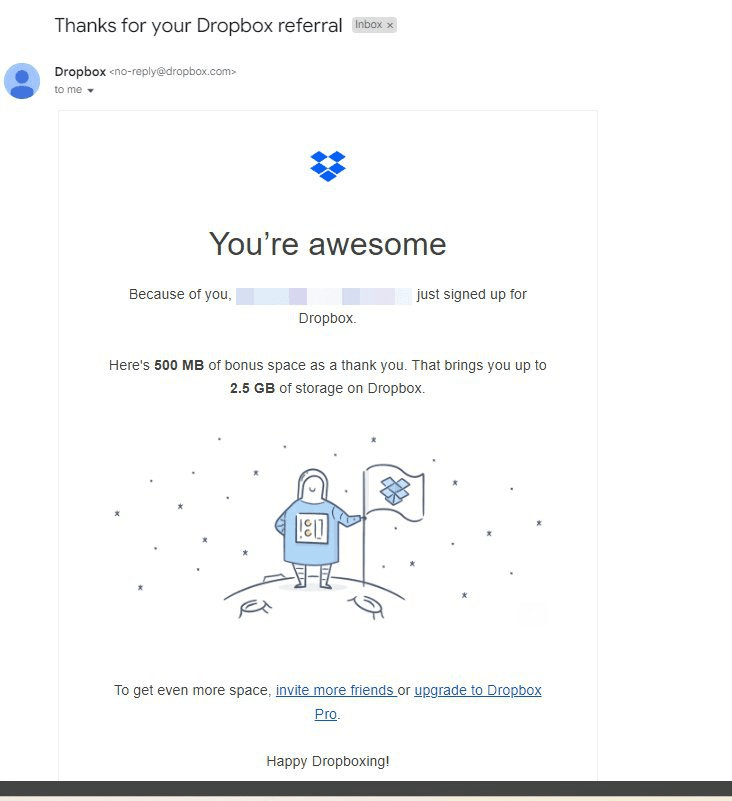
If you’re building something similar, make sure users can share in just one or two clicks. The easier it is, the more likely they are to do it again.
Prompt power users to leave reviews and testimonials
User reviews influence buying decisions more than most carefully-crafted promotional marketing campaigns ever will. But great reviews don’t appear automatically. You have to ask for it, and do it right.
One reliable trigger is NPS data. If a user gives you a 9 or 10, they’ve already told you they’re happy. That’s the moment to ask for a review.
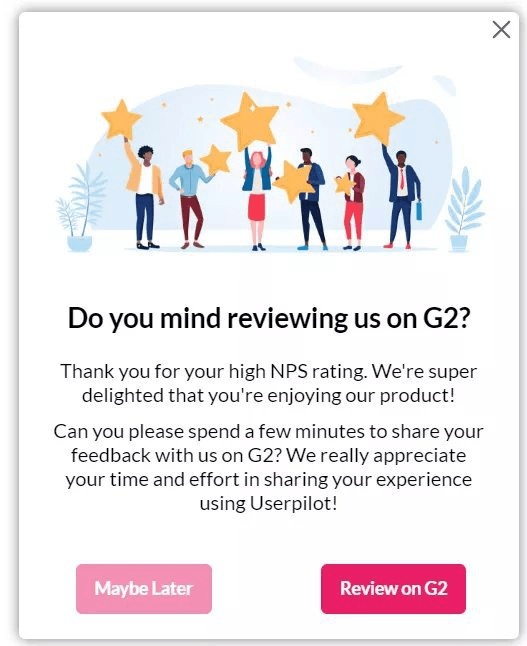
Execute your customer lifecycle marketing strategy with Userpilot
Userpilot takes the friction out of lifecycle marketing by combining email, in-app messaging, and product analytics into one seamless workspace.
That means fewer tools to juggle, less budget lost to unused features, and no more waiting on engineers to test campaign ideas.
Ready to give it a try? Book a demo to begin!
FAQ
What's customer lifecycle marketing?
Customer lifecycle marketing is a strategy that uses behavioral data to deliver the right message to the right customer at the right time, nurturing relationships and nudging them towards the next user journey stage.
What are the benefits of customer lifecycle marketing?
Customer lifecycle marketing helps businesses retain customers, increase their lifetime value, and optimize marketing spend.
How does lifecycle strategy differ from a traditional marketing strategy?
Traditional marketing often focuses on the awareness stage campaigns and lead generation through one-size-fits-all campaigns. Lifecycle marketing, especially in SaaS, creates personalized journeys based on individual user behavior and needs. While traditional marketing might send the same newsletter to everyone, lifecycle marketing sends specific messages based on behavioral data (e.g., whether someone just signed up, is approaching renewal, or hasn’t logged in recently).



